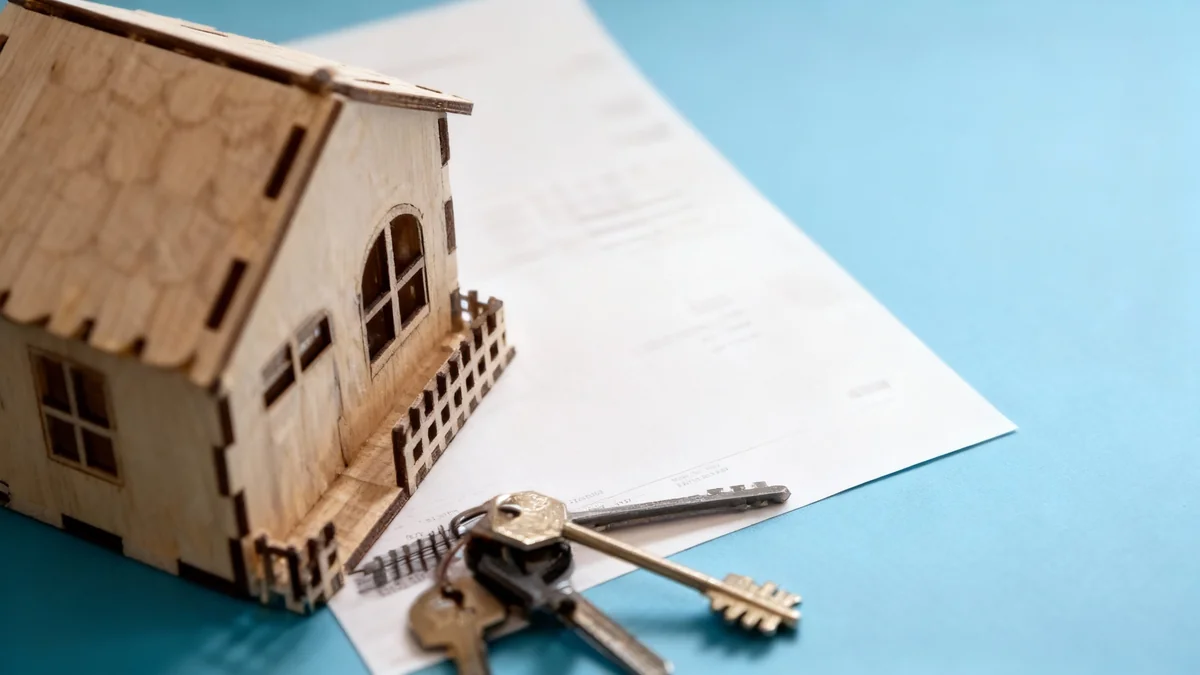The United States housing market is experiencing an unprecedented slowdown, with home sales dropping to the lowest turnover rate in decades. Data shows that only 28 out of every 1,000 homes in the country changed hands this year, a clear signal of a market grappling with economic uncertainty and affordability challenges.
This widespread stagnation, however, masks a deeply fragmented reality. While some regions are becoming strong buyer's markets, others are seeing intense competition fueled by industry booms. At the same time, the luxury sector is outperforming the rest of the market, and a significant number of deals are falling through before closing, adding another layer of complexity for both buyers and sellers.
Key Takeaways
- Home turnover has fallen to a historic low, with only 2.8% of U.S. homes sold this year.
- Approximately 15% of all homebuying contracts were canceled in September, indicating widespread buyer hesitation.
- Luxury home prices rose 5% in September, double the rate of non-luxury properties.
- Regional markets are diverging, with Austin, TX, becoming a buyer's market while the Bay Area heats up due to the AI industry.
- Military members and veterans represent a growing share of mortgaged homebuyers compared to last year.
A Market in Gridlock
The core issue plaguing the national housing market is a profound lack of activity. The turnover rate, a key measure of market fluidity, has reached a multi-decade low. This means fewer homeowners are listing their properties, and fewer buyers are making purchases, leading to a stagnant environment.
A significant factor contributing to this gridlock is the high number of canceled contracts. In September alone, 15% of pending home sales were terminated before completion. This phenomenon, often referred to as "ghosting" in the real estate world, reflects a growing sense of caution among buyers who may be backing out due to inspection issues, financing troubles, or simply cold feet in an uncertain economic climate.
Historic Low Turnover
With only 28 out of every 1,000 U.S. homes changing hands this year, the current market has the lowest turnover rate recorded in decades. This reflects a significant decrease in both supply and demand.
The share of newly built homes on the market has also declined. New construction now accounts for 27% of all for-sale inventory, the lowest share in four years. This reduction in new supply further constricts options for potential buyers and adds to the overall market slowdown.
Diverging Fortunes Across the Nation
While the national picture suggests a cooling market, a closer look reveals stark regional differences. Certain metropolitan areas are behaving in completely opposite ways, creating a tale of two markets.
Austin Becomes a Buyer's Paradise
Austin, Texas, once a symbol of the pandemic-era housing boom, has now swung dramatically in the other direction. The city currently stands as America's strongest buyer's market, with more than twice as many homes for sale as there are buyers. This imbalance gives prospective homeowners significant leverage in negotiations, a sharp contrast to the bidding wars that defined the city just a few years ago.
The Bay Area's AI-Fueled Rebound
Conversely, the housing market in the San Francisco Bay Area is heating up again. This resurgence is largely attributed to the booming Artificial Intelligence (AI) industry and a renewed push for employees to return to the office. The influx of high-paying tech jobs is driving up demand for housing, creating a competitive environment for buyers and pushing prices upward.
What Creates a Buyer's Market?
A buyer's market occurs when housing supply exceeds demand. This typically leads to lower prices, longer listing times, and more negotiating power for buyers. Factors like increased inventory, rising interest rates, or a local economic downturn can contribute to these conditions.
The Luxury Segment Defies the Trend
One of the most notable trends in the current market is the resilience of the luxury housing sector. While the broader market stagnates, high-end properties are seeing significant price appreciation.
In September, prices for luxury homes in the U.S. increased by 5% year-over-year. This growth is double the pace observed in the non-luxury segment of the market. This divergence suggests that affluent buyers are less affected by higher interest rates and broader economic concerns, allowing them to continue purchasing high-value real estate.
The strength in the luxury market highlights a K-shaped recovery, where different segments of the economy and population experience vastly different outcomes. Wealthier households continue to invest in assets like real estate, while middle and lower-income buyers face increasing affordability pressures.
Who Is Buying in Today's Market?
Despite the challenges, some demographic groups are increasing their presence in the market. Military members and veterans now constitute a slightly higher share of mortgaged homebuyers than they did last year. This trend may be linked to the unique financing options available to them, such as VA loans, which often feature more favorable terms like no down payment requirements.
"The data clearly shows a fractured market. National averages don't tell the whole story when a city like Austin has a surplus of sellers while the Bay Area is seeing renewed bidding wars. It's a market of micro-climates, not a monolith."
Ultimately, the U.S. housing market is defined by its contradictions. It is simultaneously a buyer's market and a seller's market, depending on location. It is both stalled and, in the luxury tier, booming. For prospective buyers and sellers, navigating this landscape requires a deep understanding of local conditions rather than relying on national headlines. The era of a single, unified housing trend appears to be over, replaced by a complex and highly localized reality.





